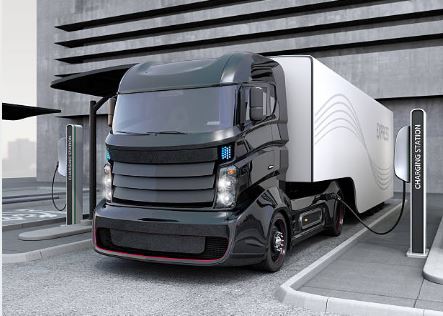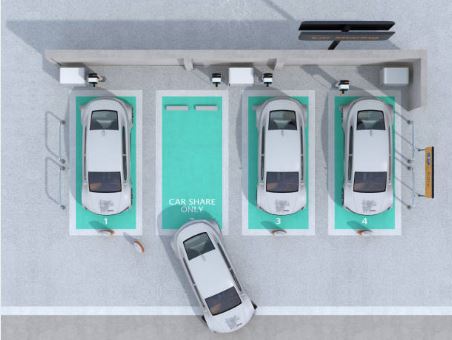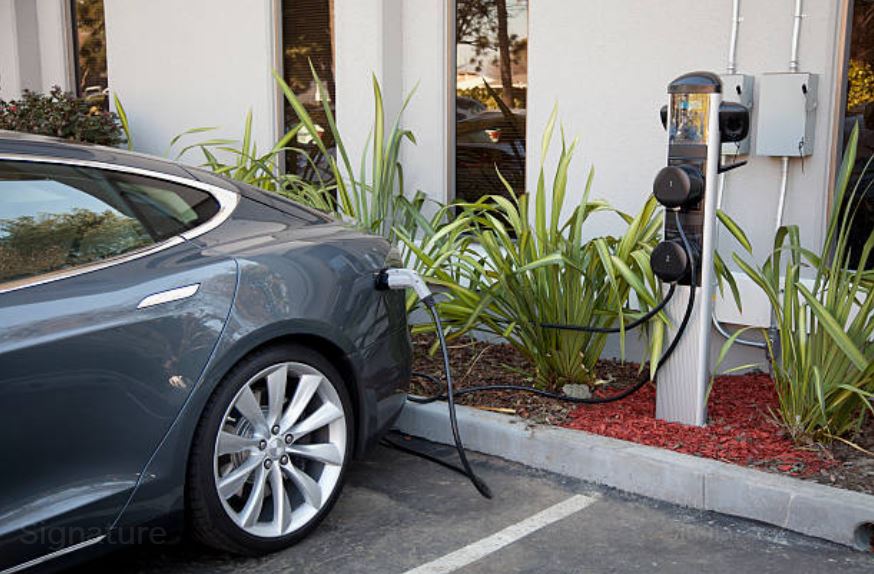
Electric vehicles are playing a significant role in driving the shift to autonomy.
The past five years have seen an extraordinary investment toward the development of autonomous vehicle (AV) technologies. More than $50 billion by some estimates.
In the short term, autonomous technologies will be used primarily to assist drivers on the road—not replace them. Helpful features like automatic parking, lane-change assistance, adaptive cruise control, automated emergency braking, and semi-autonomous navigation (often regarded as luxuries today) will eventually be considered necessities, especially as the NHTSA begins to incorporate them into its safety ratings. In addition, as more and more consumers experience these features firsthand (e.g., Mercedes-Benz Drive Pilot, Tesla Autopilot), the demand for partial autonomy is expected to grow.

Going electric.
Beyond consumer demand and safety requirements, there is another, perhaps more surprising factor driving the advancement of vehicle autonomy: electric technologies. As the electrification of vehicle transport has surged in recent years, electric vehicles (EVs) have quickly emerged as the undisputed choice for the implementation of autonomous features, as a vast majority of top autonomous automakers have selected EV models for experimentation, prototyping, and even commercialization/deployment. Given this trend, it appears inevitable that the first generations of AVs to hit the roads will be overwhelmingly electric. But why?

There are a number of reasons why AVs are typically EVs.
- Cost per-mile. Current AV business models center around the deployment of robotaxis and autonomous trucks—for fleet applications like these, cost per-mile is critical. Today, a majority of these costs are related to driver/operator expenses, but under a driverless AV business model, the major costs are related to two factors: fuel and maintenance, both of which represent tremendous advantages of electric vehicles.
- In the summer of 2019, for example, the average cost of a gallon of gas in the U.S. was approximately $2.80, while over that same period, the average cost per kWh was around 15 cents. Direct comparisons are difficult, but it is generally accepted that the cost to power an EV is approximately 50% less than the cost to power a gas-powered vehicle.
- As for maintenance, EVs have the advantage here as well. With no internal combustion processes, lower temperatures, less corrosion, and fewer scheduled services, the average maintenance savings for the current generation of EVs on the road is nearly $1,000 per year.
- Complementary technologies. The strengths of AVs offset the weaknesses of EVs—and vice versa. For instance, AVs have the potential to drive more efficiently, which has the potential to increase an EV’s range. In turn, most EVs are built with drive-by-wire systems that replace traditional mechanical control systems with electronic controls, which are more compatible with an autonomous approach.
- Simpler integration. Drivetrains in conventional vehicles can include as many as 2,000 parts, while electric drivetrains are composed of fewer than twenty. Fully electrified vehicles have no need for components such as radiators, fuel tanks, exhaust systems, or multispeed transmissions. Simply put—implementing autonomous features on EVs is more straightforward because of the base vehicle’s minimalist design.

- The forecasts. Electric vehicles are expected to account for nearly 60% of new passenger car sales, approximately 70% of all municipal buses, and almost 25% of light commercial vehicles globally by 2040, according to Bloomberg’s Long-Term Electric Vehicle Outlook report. There’s no question that the future of automotive is electric. It only makes sense that AV companies would anticipate this and respond accordingly.
- Early adopters. Technology-focused early adopters tend to prefer multiple innovations in a single vehicle, making an EV with AV features more attractive.
- Air quality concerns. AVs are expected to spend more time on the road than human-driven vehicles are today, making the air pollution caused by internal combustion engines even more of a concern. Zero-emissions EVs hold the promise to improve air quality when driven autonomously, in much the same way that urban air quality has improved demonstrably as traffic has decreased due to the recent shelter in place.
- Focus on safety. Both AV and EV technologies have the potential to enhance safety, making a combination of both even safer.
- Electric vehicles are required to undergo the same rigorous safety testing and reach the same standards required for conventional vehicles sold in the United States. In addition, there are a number of EV-specific standards that must be met as well, including design requirements that isolate the cabin and secure batteries in the event of chemical spillage or fires during a collision. In addition, EVs typically have a lower center of gravity than traditional vehicles, reducing the likelihood of rollover events.
- Autonomous vehicles: According to the NHTSA, approximately 95% of serious traffic accidents are caused by human error, and upward of 35,000 fatalities were recorded in 2018 alone. Partial autonomy in today’s motor vehicles are already helping to improve these statistics. As AV technologies improve, it stands to reason that the numbers will drop even further.
EV and AV technologies are so intertwined that it has become commonplace to use the term ACES—autonomous, connected, electric, and shared—when discussing the future of the automotive industry. To prepare for an ACES future, we at Ambarella have developed a series of high-performance, low-power artificial intelligence chips, ideal to drive EVs and AVs’ shared goals of efficiency and safety.
And on a more personal note: to help support our employees’ use of electric vehicles during their commutes to our Santa Clara office, we recently installed a number of EV charging stations in our parking lot. This is part of the company’s ongoing efforts to reduce its own environmental footprint.

Click here for more information on our computer vision chips.
For additional information, please contact us.
